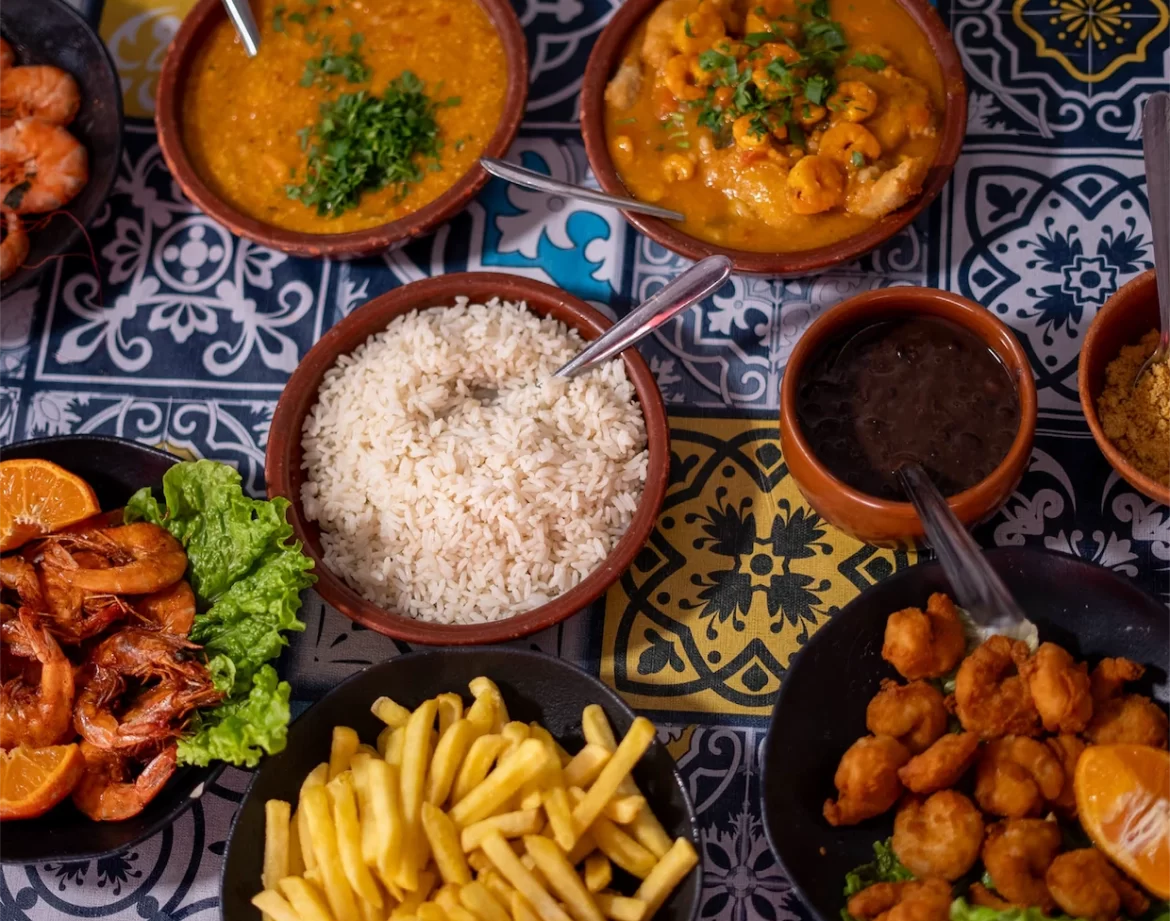Florianópolis Cultural and Gastronomic Guide: Discover the Flavors and Traditions
The Gastronomic Cultural Guide of Florianópolis is a celebration of the connection between flavor and history. In other words, more than a tourist guide, it's a work that pays homage to the essence of the Magic Island, transforming each dish into a bridge between past and present.
Marked by the rich mixture of Azorean, indigenous and African influences, Florianópolis stands out as the first Brazilian city recognized by UNESCO as a Creative City of Gastronomy.
This title gains even more relevance now with the launch of the Guide. A free material in e-book (in PDF) and podcast. Therefore, it delves deeply into the traditions, characters, techniques and ingredients that shape local cuisine.
Comprising 200 entries, including 20 multimedia features, the guide aims to reveal stories and knowledge passed down from generation to generation, revealing how the delicious cuisine connects to the rich culture of the Magic Island.

What makes Florianópolis cuisine unique?
Manezinha cuisine reflects the intimate connection between land and sea. Fresh ingredients, such as fish, seafood, and local herbs, combined with traditional techniques, create dishes that tell stories of cultural identity.
Dishes like the shrimp sequence and the mullet on the tile highlight the Azorean influence. While the use of ingredients like cassava and beans recalls indigenous and African contributions. Furthermore, festivities like Fenaostra celebrate mariculture and reinforce the importance of tradition for the community.
What typical dishes are part of the Island's history?
The guide features more than 50 culinary specialties, ranging from widely known recipes to nearly forgotten dishes. Highlights include:
Shrimp Sequence
Originating from Conceição Lagoon, the shrimp sequence symbolizes the culinary richness of the region. Prepared in various ways—with garlic and oil, stewed, or breaded—the dish is an invitation to explore the history of Lagoa's old restaurants and bars, where the tradition began.
Mullet and artisanal fishing
Mullet fishing, held between April and July, is a spectacle that mobilizes the city. This fish is prepared in a variety of ways, including roasted, stuffed, or in feijoada. The recipe for mullet in beans, in particular, dates back to the island's origins and is one of its most iconic dishes.
Cacuanga and Dobradinha do Estreito
The guide also brings back almost forgotten dishes, such as cacuanga, a mixture of fish and flour, and dobradinha do Estreito, a symbol of the artisanal work of Manezinha cuisine.
What gastronomic experiences does Florianópolis offer?
In addition to the dishes, the guide highlights events and itineraries that allow you to immerse yourself in the local culture:
Fenaostra
Held annually, the Fenaostra celebrates the oyster and Azorean heritage. The festival combines music, dancing, and, of course, tasting fresh oysters grown in the region's crystal-clear waters.
Gastronomic itineraries
The guide explores routes such as the Via Gastronômica de Coqueiros, known for its restaurants offering stunning views and dishes that blend history and flavor. Since 2006, this route has brought together more than 20 establishments that capture the essence of Manezinha culture.
In addition to the Gastronomic Route that begins in the neighborhood John Paul, goes through Cacupé, Saint Anthony of Lisbon and goes to the Sambaqui.
Mullet Fishing
The practice of artisanal fishing, with nets cast at dawn, is an authentic and exciting experience, connecting visitors to the simple life of the island's fishermen.
Who are the guardians of local gastronomic culture?
The Cultural Gastronomic Guide also pays tribute to the characters and objects that keep the island's traditions alive:
Blessings: The healers represent the community's spiritual legacy, with ancestral knowledge of herbs and natural cures.
Garapuvu Canoe: A symbol of artisanal fishing, the garapuvu canoe, carved from a single tree, is an artifact that reflects the community's ingenuity and connection with the sea.
Oyster Cages: Used in mariculture, these cages are more than just farming tools; they represent the harmonious relationship between nature and human activity in the region.
Plus, check out the ebook and podcast.
Why is the guide important for Florianópolis?
The Gastronomic Cultural Guide of Florianópolis goes beyond a simple compilation of recipes. It captures the city's memories and traditions, ensuring that future generations will learn about and appreciate the island's cultural heritage.
Created by the Comida com História project, led by Leyla Spada, Amanda Santo and Gustavo Schwabe, the guide is an example of how gastronomy can be used to preserve and celebrate cultural identity.
With plans to expand the series to other Brazilian cities, Comida com História reaffirms the importance of valuing the unique characteristics of each region. Florianópolis, with its rich mix of flavors, stories and characters, is just the beginning.
How to access the Gastronomic Cultural Guide?
Available free of charge, the guide can be accessed online, with multimedia content including documentaries and podcasts. The publication also features an interactive version that makes it easier to navigate through the various entries and scripts.
